Molesworth, Tasmania
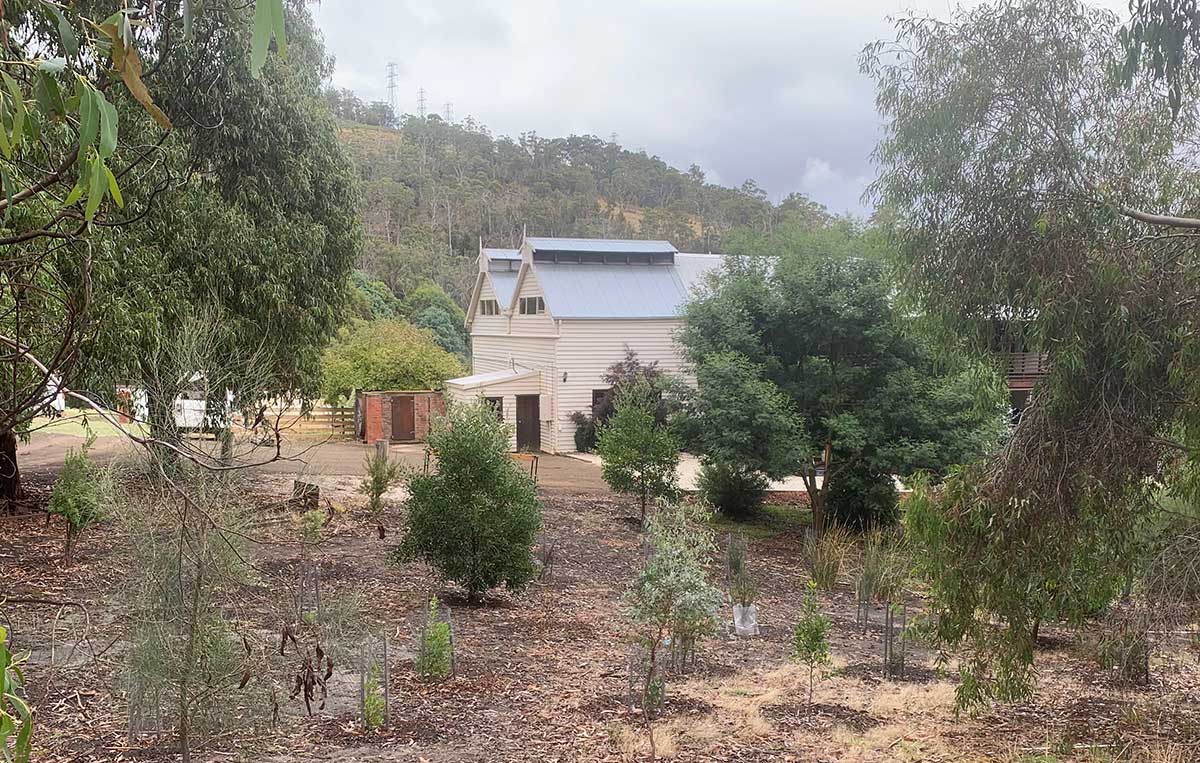
Nestled in the Derwent Valley at the foothills of the Wellington Ranges, Molesworth is one of a number of charming villages on a backroad from Hobart to the town of New Norfolk. It is located below Collins Cap about 10 kilometres south-east of New Norfolk.
Molesworth is named after well known Tasmanian, Jeffery Molesworth, who became the first J.P. for the district, and in 1865 was the architect for a new school-house and chapel in the village of Lachlan. He was elected a Fellow and Life Member of the Royal Society of Tasmania in the early 1870s. The Post Office was known as Malbina for many years; the name Molesworth first appeared in 1879 edition of Walch's Almanac. Some time ago the Commonwealth postal authorities, finding that there were several Molesworths on the Postal Directory of the Federation, decided to change the name.
The officials of the Lands Department suggested 'Malbina', which was adopted. Malbina is a native name signifying a drake. Molesworth is still known by that name, whereas Malbina is today a locality between Molesworth and New Norfolk.
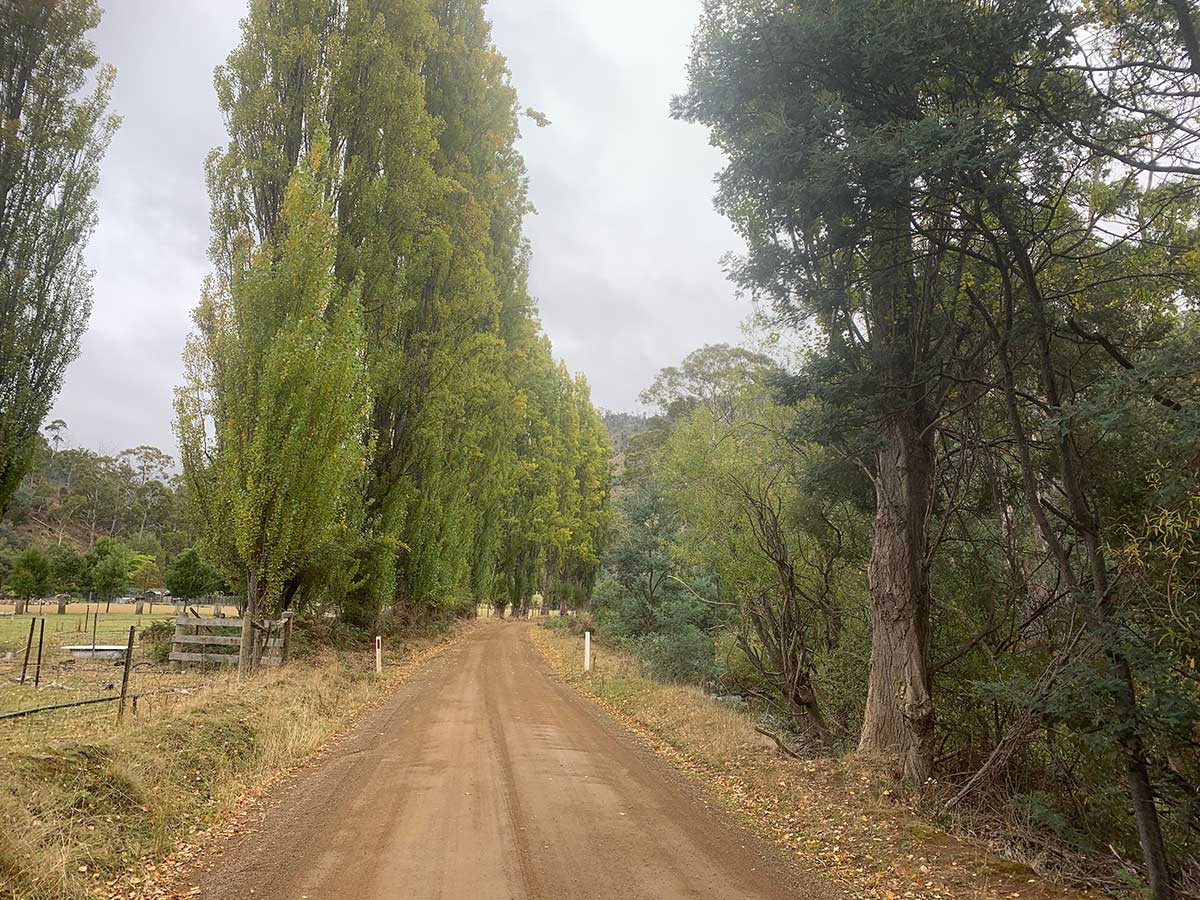
Like New Norfolk, Molesworth is known for its Oast Houses - generally large roomy buildings with a forced heated air stream powered and heated by steam engines, to dry the hops for beer production. Oast Houses were built adjoining the fertile river flats and hop fields of the Derwent Valley where hops thrived. The hop fields were protected from the wind by rows of poplars, which make for stunning vistas as they change colour with the approach of winter. Hop growers from Kent in England brought their expertise to the Huon and Derwent Valleys of Tasmania in the mid to late 1800s.
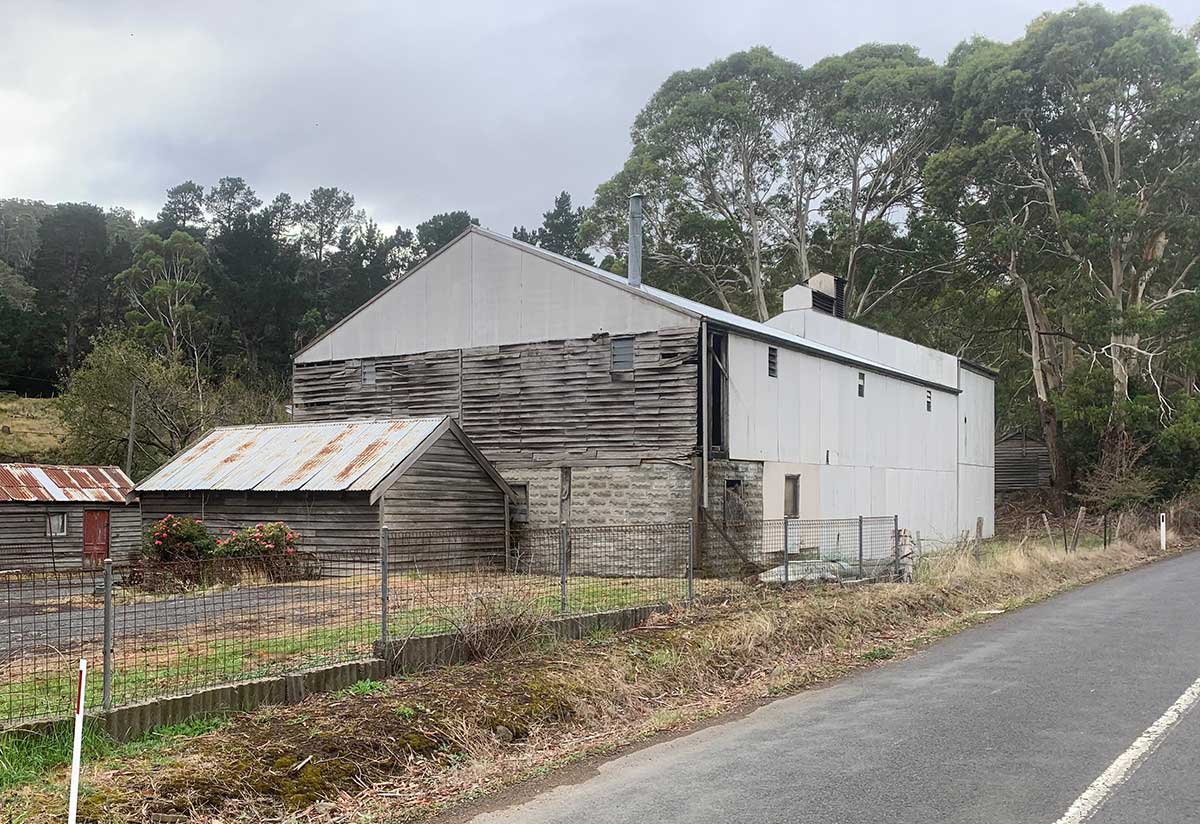
The Heritage Oasthouse, 492 Molesworth Road
1km west of Molesworth, the Heritage Oasthouse comprises a house and attached kiln and outbuildings and detached timber barns. This heritage listed unusual grouping consists of a Georgian storey brick and timber house attached to a brick hop kiln and timber outbuilding. All buildings have gable roof forms, some twelve pane windows - others two pane. The kiln has three roof vents. Location: 492 Molesworth Road, Molesworth.

Glen Dhu Road Drive
To experience a little of the beautiful local countryside away from the main road, we suggests you take a drive up Glen Dhu Road, which branches off Molesworth Road between Molesworth and Malbina. The scenic road winds its way between the hills alongside Mount Rivulet, also known as Glen Dhu Rivulet. Its bubbling, swirling rapids play host to trout and platypus, as it passes through farms and bushland bush and shady tree ferns.

At 418 Glen Dhu Road you'll come across a picturesque oast house backed by two charming timber and brick chimney hop-pickers' cottages that fit snugly into the landscape overlooking Mount Rivulet. Further on, pickers’ huts, dating from days when schools released children to go hop picking with their families, can be seen among the hawthorns.
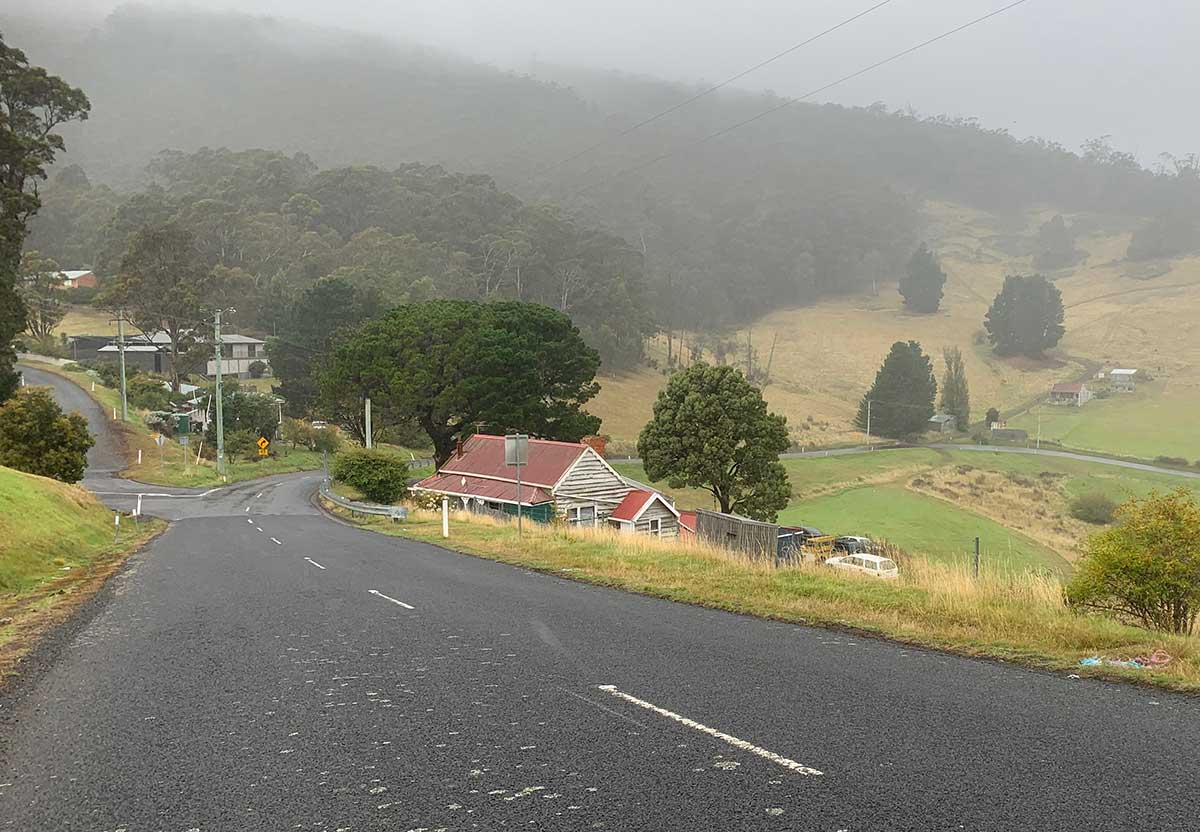
Glenlusk
Glenlusk
Glenlusk is a semi-rural suburb of Hobart, to west of Chigwell. Originally spelt as two words, it is thought the locality is named after Captain John Lusk (born 1802), master mariner and captain of the transport ships Lang, Mary, George Hibbert and Brixton. Lusk made many voyages to Van Dieman's Land (Tasmania) in the early 1800's. Records indicate that his second of three sons, George Aiken Lusk, drowned in April 1829, age 22. His brother, Arthur John Lusk, was a clerk in the office of the Provost Marshal, John Thomas Campbell. The word "Glen" is of Scottish origin, meaning "valley".
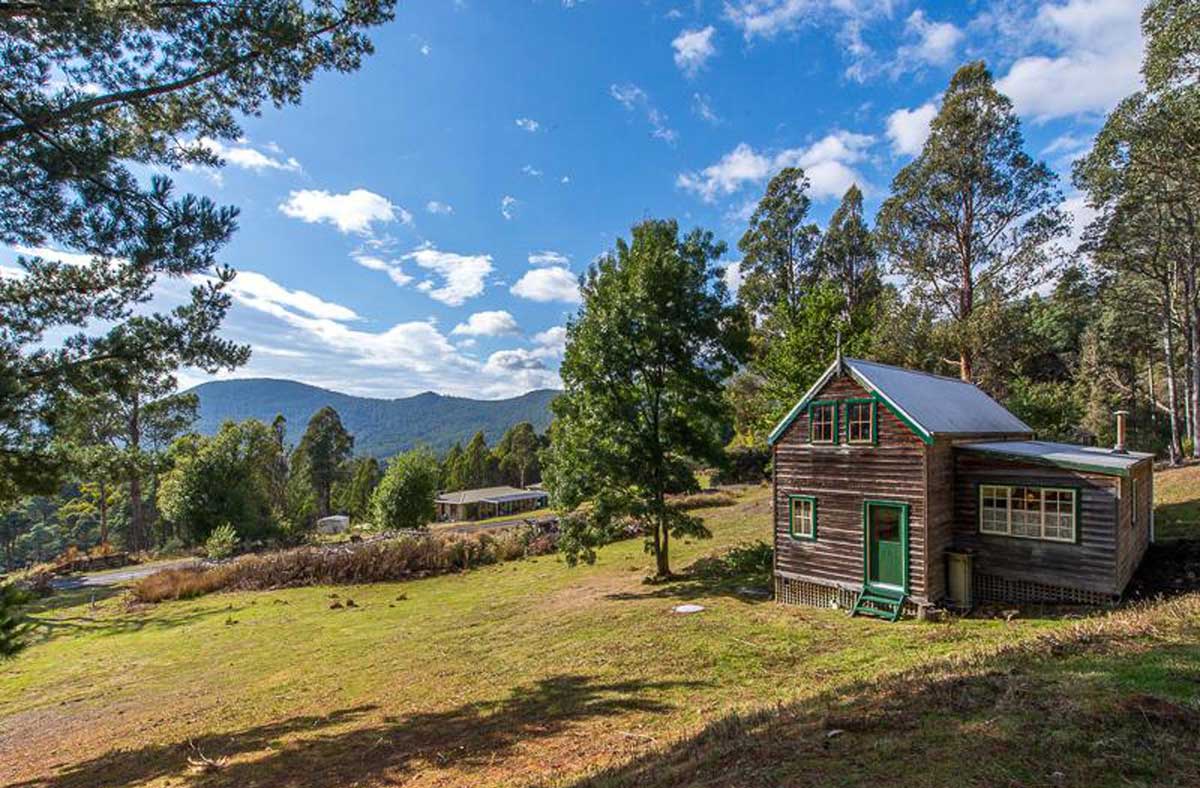
Collinsvale
Collinsvale
The area was originally known called Sorell Creek, and was inhabited mostly by British settlers in the mid-nineteenth century, but that all changed in the 1870 the arrival of the first immigrant ships to Hobart saw a large influx of German and Danish migrants who settled in the area, attracted by the cheap land and an abundance of clean water.
According to available research in 1996, this was the only substantial German and Danish community in nineteenth century Tasmania. This community emmigrated as a consequence of the Tasmanian Government's efforts in the 1870s to encourage suitable immigrants to provide agricultural labour for the growing colony. The Bismarck valley (now known as Collinsvale) was settled by people of German and Danish descent by 1870. By 1876 of the twenty people who owned land, seven were of German and Danish background. In the following year, one half of the sixteen new arrivals were also of this background. By 1881, the European inhabitants of the newly proclaimed town of Sorell Creek numbered almost half the local population. This was in contrast to the rest of Glenorchy.
At this time the town was renamed "Bismarck" in honour of the rise in Europe of the Prussian stateman Otto Von Bismarck who, in 1871, became the first Chancellor of the new united Germany. There was no transport to the valley and a road link was not made until 1890. The town's physical character was influenced by the cultural background of its builders. A 1904 photograph survives. It shows a farm at Bismarck where buildings flank a house, forming a U-shaped courtyard. This arrangement is typical of farms in Schleswig, Germany.
At the start of the First World War, Bismarck was renamed Collinsvale (after the colony's first Lt. Governor, David Collins), but not without much opposition from its residents, most of whom were either German migrants or descendants of German migrants. They argued that the change of name would create bad feeling amongst its residents, who were practically all of Tasmanian birth, and descendants of the Danish and German settlers who had really founded the settlement. Councillor G H Voss was behind a petition to stop the name change. Referring to a statement made by a speaker of the previous deputation that the produce of the district might be prejudiced owing to its place of origin, Mr Voss contended that there was no foundation in that argument. On the contrary it would be a serious thing if the name were changed seeing that the produce of Bismarck had an excellent reputation and always fetched top prices. He argued that the settlers of Bismarck all spoke the British language and they had no differences on racial matters.

Bismarck potatoes
Bismarck produce was branded with the name of the grower and the settlement and he had never heard of any objection on account of the name. As a tourist resort the name was an attraction and if the name were changed the traffic would suffer. Bismarck Shows had been famous for the quality of the produce exhibited. The deputation desired to retain a name under which they had built up a reputation for good produce." As they predicted, when the name was changed the town's reputation never recovered. Collinsvale never developed the reputation for quality produce that Bismarck had established and the area went into decline.
One item of local produce that did retain its name was the Bismarck potato. Introduced to Tasmania from Germany in the 1880’s, this is an early maturing cultivar with long, oval, creamy white tubers and flesh, and purple eyes. Bismark is ideal for boiling as a new potato, and for beaut chips when mature. Also makes great crispy potato skins.
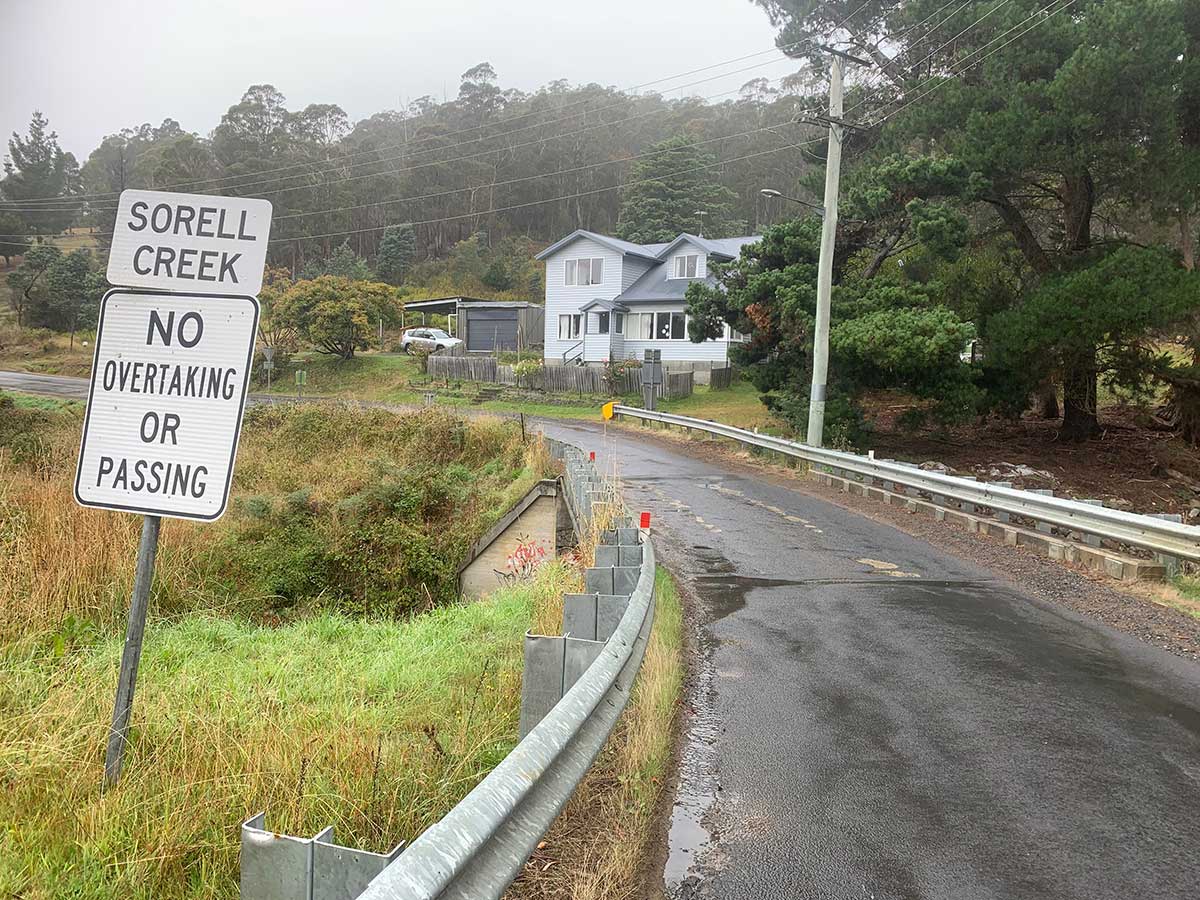
Sorell Creek, Collinsvale
On 20 August 1870, the German ship "Victoria", with 59 males, 55 females and 73 children and infants, sailed to Hobart. The naturalisation records indicate that Peter Henry Voss and Johann Christof Radfer were passengers. Radfer was born in Prussia and was formerly a farmer. He was 34 years of age when he migrated to Australia. He was originally a sailor but by 1884 he is recorded as being a farmer. It seems likely that Radfer was accompanied by his family, including his daughter Bertha, who was later to marry Peter Voss. In July 1880, Peter Voss became a land owner at Sorell Creek in the Parish of Glenorchy. His father-in-law, John Radfer, purchased 50 acres. The southern sub-section of 20 acres was registered in the names of Henry Voss and Bertha Frederica Voss. This initial grant of land became the core of the Voss' holdings in the valley and the site of the family home for about thirty five years.
Voss Cottage (49 Mill Road, Collinsvale) was constructed circa 1883, and is a rare Tasmanian example of a vernacular colonial dwelling using northern German half-timbering or "Fachwerkbau." Surviving nineteenth century examples of buildings using German building traditions are uncommon in Australia. The original cottage which Peter Voss built in 1883 was similar to the early Barossa settlers' homes. Heinrich Gustav Voss inherited the land and cottage. Known later in life as Gustav Henry Voss, he became the one of the largest land holders and orchardists in the Bismarck valley. Voss Cottage was identified by Glenorchy City Council during its demolition. By the time demolition work was halted, only the staircase, two windows (both original), the front verandah (c.1920) and attic space wall cladding (c.1920) had been removed. The staircase and windows remain elsewhere on site while the timber frame of the verandah remains. Voss Cottage provides evidence of the substantial German and Danish community, located in the Bismarck (now Collinsvale) valley during the 1870s and 1880s.
